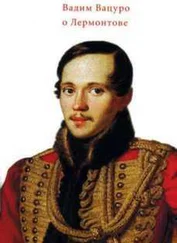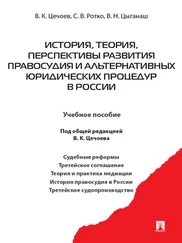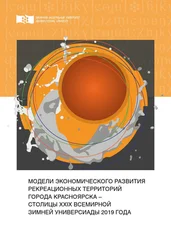The Economist (2006). Ani, a disputed city. The ruins of a contested capital are still hostage to geopolitics, June 15.
The Economist (2010). Sing a song of $40 billion, July 22.
The Economist (2012). The Laws of the City, June 23.
The Economist (2012). On a high. London. Special Report, June 30.
The Economist (2012). The City roars back, July 21.
Eisenstadt, Shmuel (1986). The Origins and Diversity of Axial Age Civilizations. NY: SUNY Press. Eisenstadt, Shmuel N. and Shachar, Arie (1987). Society, Culture, and Urbanization (Newbury Park: Sage). Eldredge, Hanford (1975). World Capitals: Toward Guided Urbanization. Anchor Press, Garden City, NY. Emet, Chad (1996). The Capital Cities of Jerusalem//Geographical Review, vol. 86, no. 2. Epstein, David. (1973). Brasilia from the Plan to Reality: A Study of Planned and Spontaneous Urban Development. Berkley: University of California Press. European Commission & Belgian Presidency. (2001). Brussels, Capital of Europe. Final Report, October. Evanson, Norma (1973). Two Brazilian Capitals: Architecture and Urbanism in Rio de Janeiro and Brasilia. New Heaven: Yale University Press. Falula, Toyin (2003). Power of African Culture. Rochester, NY.: University of Rochester Press. Fields, Gary (1999). City Systems, Urban History, and Economic Modernity // Berkeley Planning Journal, 13, pp. 102–128. Frank, Andre (1969). Latin America: Underdevelopment or Revolution? NY: Monthly Review Press.
Galiani, Sebastian & Kim, Sukkoo (2008). The Law of the Primate City in the Americas//Proceedings of a conference honoring the contributions of Kenneth Sokoloff at UCLA.
Gao, Jing (2010). Discussion on relocating China’s capital resumes after Beijing is deemed unlivable // China News, Dec 18. www.chinanews.com
Geerz, Clifford (1973). The Interpretation of Cultures. Selected Essays (NY: Basic Books). Geil, William Edgar (2005). Eighteen Capitals of China (Lippinkot Co: Philadelphia). Originally published in 1911. Gilbert, August (1989). Moving the Capital of Argentina: A Further Example of Utopian Planning? // Cities, 6, pp. 234–242. Goethem, Ellen von (2008). Nagaoka. Japan’s Forgotten Capital. Brill Nv: Leiden.
Gordon, David L.A.; Seasons, Mark L. (2009). Administrative and Financial Strategies for Implementing Plans in Political Capitals // Canadian Journal of Urban Research, June.
Gordon, I. R. (2006). Capital Needs, Capital Growth and Global City Rhetoric in Mayor Livingstone’s London Plan // Research paper, London: LSE.
Gottmann, Jean (1985). The Study of Former Capitals//Ekistics 314/315 (Sept./Oct – Nov./Dec.), pp. 541–546. Gottman, Jean (1990). Capital Cities // After Megapolisis. The Urban Writings of Jean Gottman, Baltimore, pp. 63–82. Gravier, Jean-Francoise (1947). Paris and the French Desert. Paris: Portulan.
Grief, Avner & Tabellini, Guido (2010). Cultural and Institutional Bifurcation: China and Europe Compared // American Economic Review, 100: 2, 1–10.
Ghurye, G. S. (1962). Cities and Civilization. Bombay: Popular Prakashan. Florida, Richard (2005). Cities and the Creative Class. NY: Routledge. Hall, C.Michael (2002). Tourism in Capital Cities//Tourism: An International Interdisciplinary Journal, 50 (3): 235–248.
Hall, Peter (1993). The Changing Role of Capital Cities: Six Types of Capital City // J. Taylor, J. G. Lengelle and C. Andrew (Eds.). Capital Cities/Les Capitales: Perspectives Internationales/International Perspectives. Ottawa: Carleton University Press.
Hall, John W. (1968). The Castle Town and Japan’s Modern Urbanization//John W.Hall and Marius Jansen (eds.). Studies in the
Institutional History of Early Modern Japan. Princeton UP, pp. 169–188.
Hamdan, G. (1964). Capitals in the New Africa // Economic Geography 40: 239–253.
Hansen, Niles, Higgins, Benjamin & Savoie, Donald (1990). Regional Policy in a Changing World (NY: Plenum Press).
Harris, C. (1970). Cities of the Soviet Union. Chicago: Сhicago Univ. Press.
Henderson, Vernon (2005). Urban Primacy, External Costs and Quality of Life //Resource and Energy Economics, vol.24, issues 1–2, 95–106.
Hiromi, Otsuka (1999). A Study on the National Capital City. Relocating Capital City Functions: The Significance in Japan and Other Countries // City Planning Review, no. 218, pp. 25–28.
Hirst, Paul (2005). Space and Power: Politics, War and Architecture. Cambridge: Polity.
Horvath, Ronald J. (1969). The Wandering Capitals of Ethiopia // The Journal of African History, vol. 10, Issue 02: 205–219.
Hohenberg, Paul & Lees, Lynn (1985). The Making of Urban Europe, 1000–1950. Cambridge: Harvard University Press.
Ho, K.C. (2005–2006). Globalization and Southeast Asian Capital Cities // Pacific Affairs, vol. 78, no. 4.
Hoselitz, Bert. (1955). Generative and Parasitic Cities // Economic Development and Cultural Change, vol. 3, no. 3, Apr, pp. 278–294.
Hein, Carola (ed.) (2006). European Brussels: Whose Capital? Whose City? Brussels: La Lettre Vole.
Hitti, Philip (1973). Capital Cities of Arab Islam. Minneapolis: University of Minnesota Press.
Holston, James (1989). The Modernist City: An Anthropological Critique of Brasilia. Chicago: University of Chicago Press.
Hosking, Geoffrey (1998). Russia: People and Empire, 1552–1917 (Harvard University Press).
Iannaccone, Laurence; Haight, Colleen; Rubin, Jared. 2011. Lessons from Delphi: Religious Markets and Spiritual Capitals//Journal of Economic Behavior & Organization, 77, pp. 326–338.
Ikoku, Goomsu (2004). The City as Public Space: Abuja – the Capital City of Nigeria// Forum, vol. 6, issue 1, pp. 34–45.
Innovation Cities™ Top 100 Index, 2010, 2thinknow Innovation Cities Analysis Report, Melbourne. http://www.innovation-cities.com/ innovation-cities-top-100-index-top-cities/
Inwood, Stephen (1998). A History of London. London: Carroll & Graf Publishers.
Isserman, Andrew (1995). Comments on ‘Urban Concentration’ by Krugman//Proceedings of the World Bank Annual Conference on Development Economics.
Izazola, Haydea (2004). Migration to and from Mexico City, 1995–2000 // Environment & Urbanization, vol. 16, no. 1.
Jacobs, Jane (1984). Cities and the wealth of nations: Principles of economic life. NY: Random House.
Joffe, Alexander (1998). Disembedded Capitals in Western Asian Perspective // Society for Comparative Study of Society & History.
Kedourie, Elie (1984). Foreign Policy: A Practical Pursuit // The Crossman Confessions and other Essays in Politics, History, and Religion. London: Mansell, pp. 133–136.
Kacar, Duygu (2010). Ankara, a small town transformed to a nation’s capital // Journal of Planning History, vol. 9, 43–65. Keating, Michael (1983). Decentralization in Mitterand’s France, Public Administration, 61: 237–252. Kearns, K.C. (1973). Belmopan: perspective on a new capital//Geographic Review, 63: 147–169. Kern, Iara & Pimentel, Ernani Figueiras (2001). The Secret Brasilia: Enigmas of Ancient Egypt. Porfiro (Brasilia). Keyes, Sean (2012). How Capital Cities Can Turn into Parasites? // Money Week, Mar 13.
Kezer, Zeynep (1992). The Making of a National Capital: Ideology and Socio-Spatial Practices in Early Republican Ankara. Ph.D. diss., University of California at Berkeley.
Kim, Yeong-Hyun, Short, John (2008). Cities and Economies. NY: Routledge.
Keiting, Frank (1994). Sacred Capitals of Asia, The Asian City: Processes of Development, Characteristics and Planning/Ed. by Ashok Dutt. Dordrecht: Kluwer Academic Publishers.
Khayutina, Marina (2008). Did the first Kings of the Zhou Dynasty Relocate their Capital? The Topos of the Central Place in Early China and its Historical Contexts, xvII Conference of the European Association of Chinese Studies, 6–10. August, Lund.
Khayutina, Marina (2007). Zur Konstruktion der imperialen Hauptstadt im frühen China, Workshop Metropolen of the interdisciplinary project Comparison of Empires at the Ruhr-University Bochum. 2 February, Bochum.
Читать дальше
Конец ознакомительного отрывка
Купить книгу






![Уилл Дюрант - Уроки истории [Закономерности развития цивилизации за 5000 лет]](/books/404194/uill-dyurant-uroki-istorii-zakonomernosti-razvitiya-thumb.webp)





